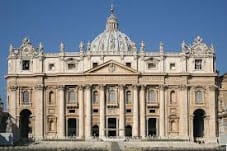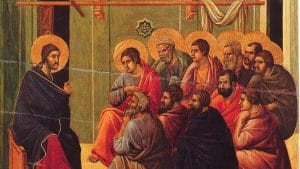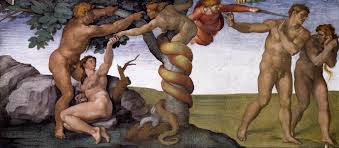Last week, Senator Tim Kaine from Virginia wrote an Opinion piece in the National Catholic Reporter weighing in on the debate over Catholic politicians who openly support abortion and the reception of Holy Communion. The Senator clearly articulates the challenges faced by politicians who attempt to adhere to the Catholic faith when Christendom has eroded. Although he does not frame it using the same terms, he speaks of applying the principle of the Art of the Possible when fighting against the Culture of Death. Despite the good beginning, ultimately Senator Kaine’s opinion reveals him not to be Catholic, but an Americanist.
Americanism was first condemned as a heresy in the Church by Pope Leo XIII in a letter to the American Bishops in 1899. The Pope condemned the infection of Catholicism by the American “spirit of independence which passed too easily from the political to the religious sphere.” It attempts to replace the Holy Spirit with the Spirit of `76 and to focus only on areas of agreement with other Americans.
Revealing the Americanist Heresy
Only an Americanist would say that “bishops demanding that Catholics in public life not only live according to church doctrine but additionally shape the law, even to include the threat of criminal prosecution and punishment, to enshrine church doctrine on sexuality as mandatory for all Americans is contrary to our basic liberty.” And only an Americanist would ask, “Why would government require that Catholic sexuality doctrine, or Sharia law, or Orthodox Jewish rules about Sabbath observance, be followed by all?”
A Catholic would never need to ask that question because the answer is simple: Catholicism is true and the others are false. At the very least we can say that “Catholic sexuality doctrine” is binding upon all because it is based on the natural law. He has committed the fallacy of equivocation. As a Catholic he should know and believe that the only protection of our “basic liberty” comes through following the truth, both as revealed in nature and directly by God.
The law most certainly should be shaped according to the truth and not according to the whims of the masses. His job is not “representing a pluralistic society” but of representing God (Romans 13:1) from whom his authority comes. The Americanist always believes there is a separation in Church and State, but the Catholic knows that just as separation of body and soul leads to death, so too a “wall of separation” between Church and State leads to death of a society (and its members).
Americanism Leads to Arianism
Furthermore, the Senator attempts to put up a wall of separation between the man Jesus and the Word adding Arianism to his list of heresies. He says that “a decision by U.S. bishops to elevate issues of human sexuality, however important, above all others seems contrary to the Gospel. No reading of the life of Jesus would suggest these issues as his primary, or even secondary, concern. His towering message is about love of neighbor as oneself with a special focus on the poor, sick, hungry, marginalized.”
First of all, there is a reading “of the life of Jesus” that suggests these issues are of significant concern. That reading would include three mentions of human sexuality in the Sermon on the Mount regarding purity (5:8), lust (5:27) and divorce (5:31-32). Likewise in Chapter 19 of Matthew he speaks of marriage being restored to how is was in the beginning. Given how deeply sexuality concerns human beings, we would be surprised to find the Word becoming Flesh and ignoring those things as the Senator suggests.

Senator Kaine also makes the Arian mistake of not grasping that the Word of God as revealed throughout Scripture is the same Word of God Who took flesh. This is why we must look upon the Scriptures as a whole and not just focus on the “life of Jesus”.
The Senator also treats abortion as an “issue of human sexuality.” Certainly, the child being conceived has something to do with human sexuality, but the fact that they are legally killed is a matter of social justice. His rhetorical bait and switch allows him to speak of Jesus’ “towering message about love of neighbor…with a special focus on the poor…marginalized” and then support legislation that takes the most vulnerable, the most marginalized in the womb and sentences them to death.
Americanism and the Reception of Communion
Animated by the Americanist spirit, we should not be surprised to find the Senator taking exception to the practice withholding Communion from Catholic politicians who obstinately remain in support of grave sins such as abortion and gay marriage. The “wall of separation” between Church and State likewise divides the Americanist’s heart from his political action. It is impossible, according to the Senator, that a bishop or a priest should judge the heart of politician by his action.
A moment’s reflection upon this position shows its absurdity. Saying you are “personally opposed” to something while simultaneously supporting it by voting for and enacting legislation that leads to its spread is a lie. Personal opposition always manifests itself through public opposition. For a politician like Senator Kaine to have a 100% NARAL rating and to claim personal opposition is impossible.
The point is that someone may be in favor of abortion, but not let anyone else know. That is, in a certain sense, a “private” sin and nearly impossible for a bishop or a priest to judge. Therefore, you would not expect them to withhold Communion from that person. However once someone’s view has become public, that is, once they have made their will known, their sin likewise becomes public. Now, there is no longer a question of judging the interior disposition, but the exterior revelation of the interior disposition. In that case, the bishop or priest has an obligation to withhold Communion for the good of the person’s soul (more on this in a moment). Likewise, the bishop or priest would be contributing to the scandal attached to the public sin by not publicly correcting it. Notice that this would apply not just to politicians but to anyone and any public sin.
It might be contended that the politician might be in a state of ignorance regarding the seriousness of their sin. This of course allows for a private discussion in which the bishop or priest lets the person know that they are in an objective state of grave sin so as to remove any ignorance that might be present. This would give the person the opportunity to repent publicly without the appearance of having been chastised.
The Eucharist should be withheld for the person’s own good because to receive unworthily, that is, in a state of mortal sin, is to draw condemnation upon oneself (1 Cor 11:29). That is, they sin further by desecrating the Eucharist and do further harm to themselves. It is analogous to cutting a drug addict off from access to more drugs so they do no further harm to themselves. This is not being “judgmental” but instead is a pastoral act of love.
Before closing, it is worth responding to the concluding statement by Senator Kaine because it is a popular “go to” for people in his situation. “The Eucharist, although it is the fullness of sacramental life, is not a prize for the perfect but a powerful medicine and nourishment for the weak.” Medicine is not for the dead, but for those who are sick and weak. Those in a state of mortal sin are spiritually dead and incapable of eating—it is St Thomas who says a dead man cannot consume food; he first needs to be spiritually resurrected from the dead through Confession. Instead, the nourishment is for those who are in a state of grace but battling the weakness of concupiscence. The Church has always taught that the Eucharist is a Sacrament of the living and cannot be given to those who are spiritually dead without first going to Confession. Senator Kaine seems to be omitting this important detail from his argument.


















